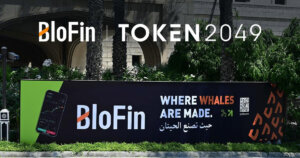From Bait to Plate on Ethereum’s Blockchain
Photo by Gregor Moser on Unsplash
Viant, an Ethereum-based platform backed by ConsenSys, provided attendees with a unique dining experience at the Ethereal Summit where the journey from “bait to plate” of the very tuna they were served, was disclosed. The use of blockchain technology in supply chain management may help with the transparency of consumer food sources and potentially create a more ethical and human fishing industry.
The Ethereal Summit was a 2-day event that connected a community of blockchain enthusiasts where companies presented ways that blockchain technology can create a decentralized future. Additionally, half the speakers were female, an impressive indication of inclusivity in a predominately male industry.
From “Bait to Plate”
Viant demonstrated a standout use of blockchain technology to track your food all the way from its origin to your plate.
An immutable record allows consumers ease of mind with the knowledge of their food source, such as the tuna served at the Ethereal Summit was caught in sustainable waters, using ethical labor (forced labor in the fishing industry is not uncommon).
A short documentary was shown at the start of the dinner and the napkins at the table had a scannable QR code that linked to the exact details of the Yellow Fin Tuna’s trek.
Did you know that 59% of the fish labeled Tuna isn't tuna? So what is it? Blockchain can help end that mystery! During #EtherealNY @viant_io showed how #blockchain will revolutionize the tracking process . LINK: https://t.co/xmKgNEYYtx #BlockchainWeekNYC #ethereum #ConsenSys pic.twitter.com/eB1NMTak4Y
— Ethereal (@EtherealSummit) May 21, 2018
How does it work?
Immediately after the fish is caught, the fisherman attaches a radio-frequency identification (RFID) tag to the fish. This assigns the fish a trackable, unique ID number to monitor the fish’s journey via geolocation. In turn, Viant can demonstrate that the fish was caught in sustainable waters, and the many different stages the fish experienced before reaching the plate at the Ethereal Summit.

The supply chain of a fish is not managed solely by one company and must pass through several different groups. This is where the trustless technology of blockchain technology becomes relevant.
The rigorous process that Viant employed to trace the fish, ensures that each party records their own information and that no one party is responsible to correctly log all location information.
This is significant as one group may misrepresent data whether by mistake or intention and is accessible by anyone. Thus, the Ethereum blockchain presents a trustless, immutable, record for all.
The Human Element
Although the recorded data cannot be modified, it is still recorded and added manually, indicating it is susceptible to human error, deliberate misrepresentation, and fraud.
A survey by Deloitte found that the use of analytics to combat third-party supply chain fraud, waste, and abuse risk jumped from 25.2% in 2014 to 35% in 2017.
Another problem that could alter the data is physical damage to the RFID tag during the journey of the fish or if the tag is intentionally assigned to a product it wasn’t intended for, thus interfering with the data being recorded.
Though these are issues that need to be addressed, it is reasonable to question how realistic it is to assume that all food supply chains will be truly transparent without the need for human intervention.
Tyler Mulvihill, Viant co-founder said:
“There may very well be imperfect solutions built using the Viant platform, but the users and customers will react and demand improvements.”
The need for sustainable fishing and humane labor practices is vital as the fishing industry supports millions of people globally, especially in developing nations. Implementing blockchain technology in this sector is a significant step in creating transparent supply chains and possibly reducing the human and environmental cost of our fish.






























































